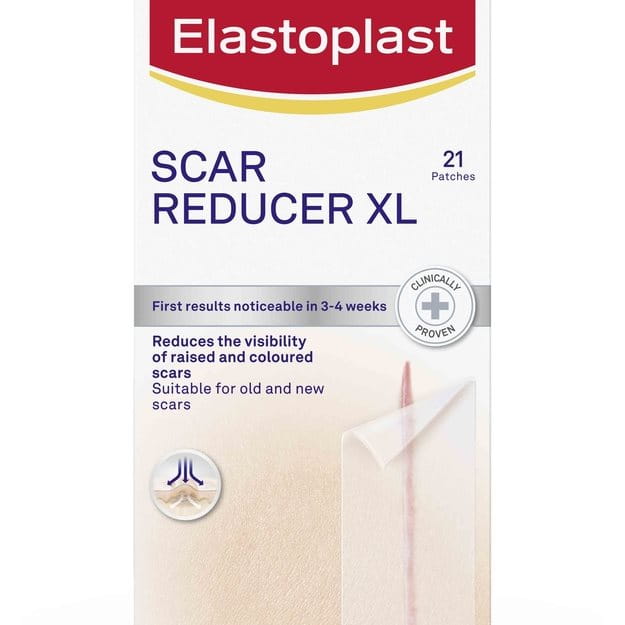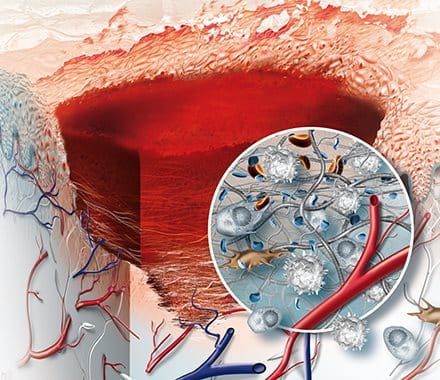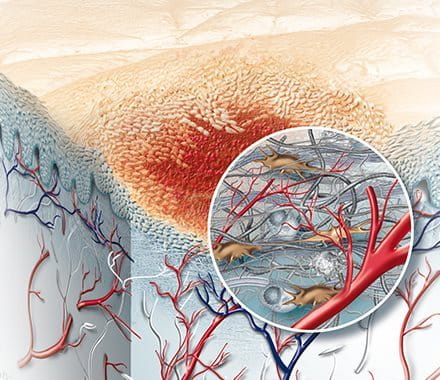Once phase one is complete and your body is no longer bleeding, your body activates its key defence mechanism – inflammation.
This phase works to kill bacteria and remove debris with white and other blood cells. Inflammation ensures that your wound is clean and ready for new tissue to start growing.
This phase can be the most painful of all. As the blood rushes to the wound to clean it, you will start to notice:
Inflammation generally takes up to six days and should go away.
If you experience excessive pain, heat and/or reddening (all signs of your inflammation response working in overdrive), your wound could have become infected. An infected wound can be dangerous, so always ask a doctor to take a look.
It is important to keep the wound clean to prevent infection. Cleanse your wound from dirt, bacteria and visible particles with the Elastoplast Wound Spray to prevent infections.





